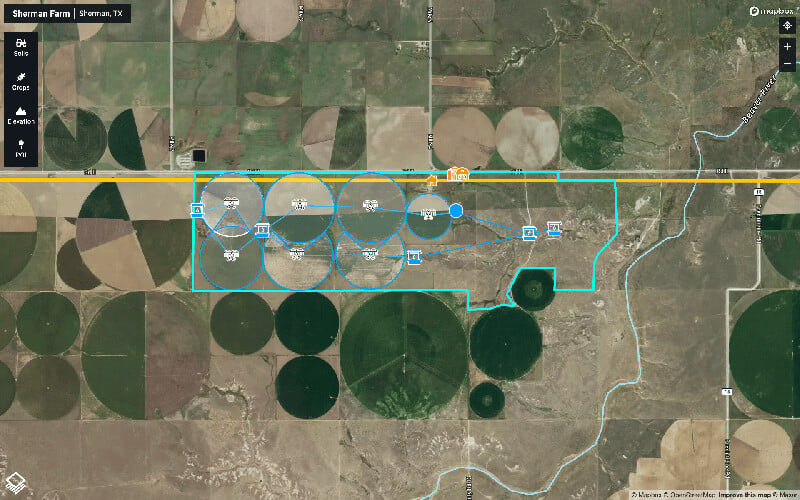One of the most underrated marketing tools a real estate agent can use for selling rural land is a custom map. Custom maps can enhance land listings by providing a visual way to communicate the layout of a property, highlight its key features, and note property improvements. In turn, utilizing custom maps can showcase your expertise about the listing, ultimately attracting more (and better informed) buyers and sellers.
The first step in building a comprehensive custom map for a rural land listing is to find a mapping tool or platform, like Acres, that is easy to use, made for rural land, and has shareable features (for example, downloadable reports and map embeds for the listing).
So, how do you make an engaging and easy to share map that will make your listing stand out? Let's dig in.
1. Start With the Boundaries
Begin your custom map with boundary lines. While you can often begin with a digital plat map, custom mapping platforms allow you to ensure that you are representing the property boundaries as accurately as possible.
2. Identify Key Selling Points
If you are a rural land agent, custom maps can be powerful marketing tools. Unlike residential listings, rural land listings are often intricate and include more acreage, making it harder to showcase in words and photos alone. Custom maps can be used to contextualize a larger property’s key features and selling points.
Understanding what the buyers and sellers in your area are looking for and what each individual listing has to offer can get you started on choosing your mapping style and what to feature.
For example, if water access is a major consideration for buyers in your area, mapping irrigation may be a top priority. Listing land with great hunting? A map can help you showcase stands or blinds already present on the property.
Other key features that a custom map may include:
- Property lines
- Access roads
- Trail systems
- Gates and fence lines
- Wells and pumps
- Oil or wind
- Unique property layouts
Just like any piece of marketing, take the time to consider what key differentiators will make your map stand out and attract the ideal buyers.
3. Add Notes and Photography
Once you have identified the key selling points of the property and marked them on your map, you can begin adding supplemental material. If your mapping platform allows it, add notes and photography to key features. If not, make sure your map reinforces your listing's text and photography.
4. Share Your Map
Shareability is crucial when choosing a mapping platform because it provides easy access for buyers who may be interested in your listing. Some mapping tools are designed so you can quickly and efficiently download reports, embed the map within a listing, and share the map link with potential buyers. Attaching a property report as a PDF or embedding a map will encourage buyers to dig into the property details with ease.
Final Thoughts
Creating attractive custom maps can give potential buyers a tangible image of a property’s key features and make your listing stand out from your competitors. Ultimately, a custom map should tell the story of the land, highlight key selling points, and make it easy for buyers to identify whether or not the property meets their needs.
